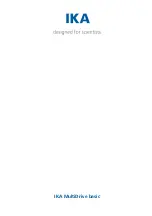
5-4
TROUBLESHOOTING
ORBAN MODEL 9300
To reduce the audible effect of such ringing, minimize the amount of 5 or 6 kHz en-
ergy applied to the filter. The most effective way to do this is to implement pre-
emphasis with the HF parametric equalizer instead of the HF shelving equalizer. By
boosting 3 kHz with the parametric equalizer, you will improve speech intelligibility
on narrowband radios, yet the parametric’s bell-shaped boost curve will produce
considerably less boost at 5 or 6 kHz than the HF shelving equalizer would have oth-
erwise produced.
You can also exploit the
LPF
S
HAPE
control in the system presets. This control allows
you to set the system lowpass filter’s frequency response curve so that it is –0.1 dB,
–3 dB, or –6 dB at the cutoff frequency. By making the transition between the pass-
band and stopband progressively more rounded and gentle, each step trades off
duller sound against less ringing.
Dull Sound
A narrowband antenna that truncates higher modulating frequencies is the most
likely cause. Inappropriately low settings of the HF EQ control can also cause it.
Also, bear in mind that most analog AM receivers have less than 3 kHz audio band-
width so they will inevitably sound dull compared to full-bandwidth media.
Excessive Occupied Bandwidth
The active system preset determines the maximum audio bandwidth at the 9300’s
output. (This can be reduced within a User Preset, but not increased higher than the
setting in the active system preset.)
The 9300 has very tight spectral control that significantly exceeds the requirements
of all international regulatory authorities, including the FCC and ITU-R. Because DSP
software does the processing, there is very little that can go wrong with the 9300
that will increase its output bandwidth without causing an all-out failure of the
unit.
If a spectrum analyzer determines that the 9300 is creating excessive bandwidth by
itself, the likely culprits are the output D/A converter and the output line amplifier.
However, a far more likely cause is a misbehaving transmitter Any problem in the
transmitter that causes audio distortion will also increase occupied bandwidth Flat
tubes are particularly suspect.
Some older designs (like out-phasing modulation schemes) are notorious for causing
out-of-band radiation when processing audio with substantial preemphasis, like that
supplied by the 9300. After the out-phasing transmitter's exciter has been carefully
realigned, the only cure for any remaining excessive out-of-band radiation is to re-
duce the setting of the 9300's lowpass filter until the transmission is within specifica-
tion. These old transmitters are prime candidates for replacement with a modern
transmitter, which will reduce AC power costs and sound much better on-air.
Negative overmodulation that causes carrier pinch-off will also cause the bandwidth
to increase rapidly. Older transmitters may respond better to negative modulation
slightly below 100%, as their distortion can rise rapidly as they approach 100%
modulation.
Содержание OPTIMOD-AM 9300
Страница 1: ...Operating Manual OPTIMOD AM 9300 Digital Audio Processor Version 2 0 Software...
Страница 7: ...Operating Manual OPTIMOD AM 9300 Digital Audio Processor Version 2 0 Software...
Страница 178: ...3 46 OPERATION ORBAN MODEL 9300...
Страница 200: ......
Страница 221: ...OPTIMOD AM DIGITAL TECHNICAL DATA 6 21...
Страница 222: ...6 22 TECHNICAL DATA ORBAN MODEL 9300 CONTROL BOARD PARTS LOCATOR...
Страница 228: ...6 28 TECHNICAL DATA ORBAN MODEL 9300...
Страница 229: ...OPTIMOD AM DIGITAL TECHNICAL DATA 6 29 I O DSP BOARD LEFT AND RIGHT ANALOG INPUTS...
Страница 230: ...6 30 TECHNICAL DATA ORBAN MODEL 9300 I O DSP BOARD ANALOG OUTPUTS...
Страница 231: ...OPTIMOD AM DIGITAL TECHNICAL DATA 6 31...
Страница 238: ...6 38 TECHNICAL DATA ORBAN MODEL 9300 FRONT VIEW REAR VIEW FRONT PANEL PARTS LOCATOR DIAGRAM...
Страница 242: ...6 42 TECHNICAL DATA ORBAN MODEL 9300 NOTES...
















































